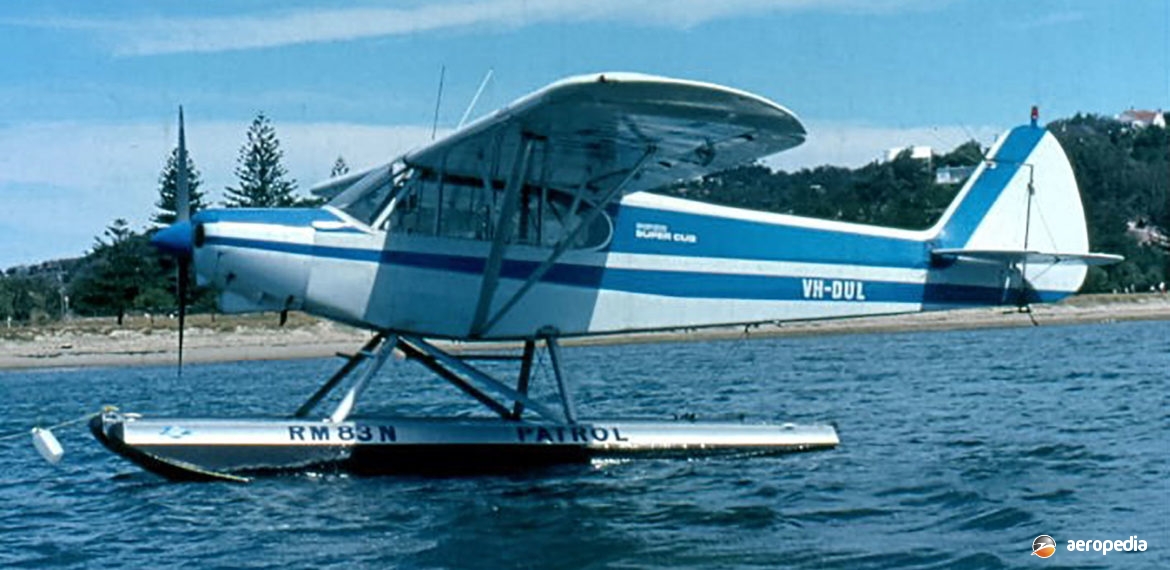Photograph:
Piper PA-18 Super Cub VH-DUL (c/n 18-7909110) floatplane at Palm Beach, NSW in October 1980 (David C Eyre)
Country of origin:
United States of America
Description:
Two-seat lightsport and training monoplane
Power Plant:
One 112 hp (150 hp) Lycoming O-320 four-cylinder horizontally-opposed air-cooled engine
Specifications:
- Wingspan: 10.76 m (35 ft 3½ in)
- Length: 6.91 m (22 ft 6 in)
- Height: 2.03 m (6 ft 8 in)
- Wing area: 16.58 m² (178.5 sq ft)
- Max speed: 209 km/h (130 mph)
- Cruising speed at 75% power: 185 km/h (115 mph)
- Initial rate of climb: 293 m/min (960 ft/min)
- Service ceiling: 5,791 m (19,000 ft)
- Range at 185 km/h (115 mph): 740 km/h (460 miles)
- Empty weight: 422 kg (930 lb)
- Loaded weight: 794 kg (1,750 lb)
History:
The Super Cub, the prototype of which was flown in 1949, was a development of the Piper PA-11 Cub Special, which in turn was a development of the J-3 Cub of 1938. Designed as a trainer, air-observation post, light utility aircraft, etc, it received its type approval on 18 November 1949, replacing the PA-11 on the production line.
Over the years the Super Cub has been marketed in a number of variants, with a variety of engines; and the basic design has been copied by a number of manufacturers. The first model was the PA-18-95 with a 67 kw (90 hp) Continental C-90 engine, followed by the PA-18-105 with the 81 kw (108 hp) Lycoming O-235 engine. The next model was the PA-18-135 fitted with the 101 kw (135 hp) Lycoming O-290-D2 engine in 1952; and the PA-18-150 was released in 1955. Other variants have included the PA-18A, an agricultural version for dusting or spraying operations, and military models designated L-18 and L-21.
The Super Cub had a steel-tube fuselage with fabric covering, and special anti-corrosive treatment was given to the floatplane variant. The wing consisted of riveted aluminium ribs mounted on extruded aluminium spars with tubular drag and compression struts, and steel drag wires. The leading edge was aluminium, and the remainder was fabric covered. When production ceased in 1982 more than 7,000 examples had been built.
Subsequently WTA Inc of Lubbock, Texas, obtained marketing rights for the Super Cub and the Pawnee Brave, and the two types were placed back in production by the Piper Aircraft Corp, being built by that Company and supplied to WTA for sale, the aircraft then being known as the WTA (Piper) PA-18-150 Super Cub. It was produced in three models, each differing only in optional equipment available. However, further problems arose and production again was concluded after 250 aircraft had been built. In 1993 Piper re-commenced production and a further 100 were built but the line closed again in 1994. A number of other companies have built replicas of the Super Cub series, a few being available in kit form, and these are dealt with elsewhere.

